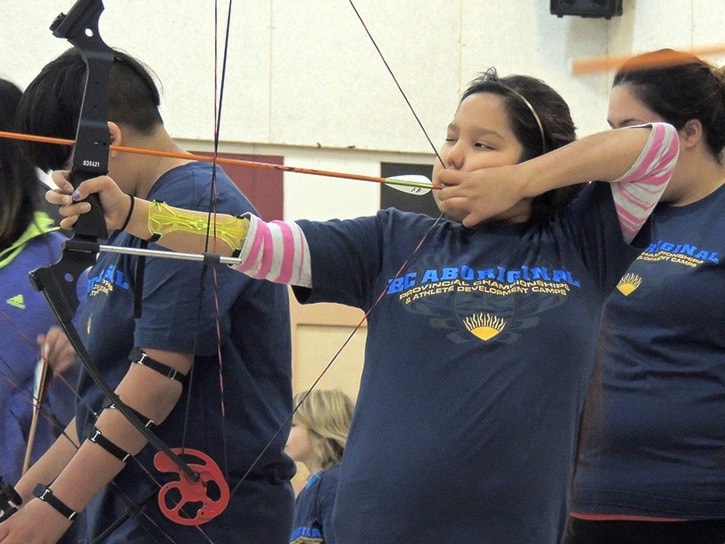The whistle blows, and the kids cross the bright orange pylons to retrieve their arrows. They laugh as they tug at the arrows, some sliding out with ease while others are stuck deep in the targets.
Emily Peters, 12, is amongst the students here today. She's a Seabird Island resident and, along with her brother, is learning the art of archery. The youth are in Seabird Island's gymnasium to take part in a weekend archery camp aimed at Aboriginal youth. She says she is learning how to "shoot, aim and do it right."
Lara Mussell is on the provincial Aboriginal Sport, Rec & Physical Activity Partners Council.
"We've been doing a series of events in order to provide sport development opportunities for Aboriginal youth," explains Mussell.
The provincial council wants Aboriginal youth like Emily to be introduced to sports that are featured in the North American Indigenous Games. The last games were held in Regina in 2014, with approximately 5,000 athletes representing 756 tribes and participating in 14 sporting events, including archery.
The introductory weekend, which was capped at 40 participants and had a wait list, featured coaches from the BC Archery Association as well as Fraser Valley Archers. Coaches trained the kids in proper handling and shooting as well as a competition portion to help single out youth who may be good candidates for the next Indigenous Games.
Archery has taken off in the last couple years with youth thanks to movies like Brave and The Hunger Games. Ron Ostermeier, president of the BC Archery Association, says the latter movie is actually credited with turning archery from a tentative sport for the games to a core sport, meaning it will always remain a part of the North American Indigenous Games.
Ostermeier, who has been an archer for more than 35 years, has seen interest from every age group, not just teens wanting to be like the fictional character Katniss Everdeen.
"I've got people just staring up in their 80's," says Ostermeier.
He says camps like this one, which was held April 11-12, are important because they teach proper technique, focusing on "form and habits."
Mussell explains that for some of the Indigenous Games sports such as archery, they need to have introductory clinics because there are so few opportunities for archery learning outside of these camps compared to sports such as hockey or swimming. When the next games draw closer, the Aboriginal Sport, Rec & Physical Activity Partners Council will host a province-wide archery tryout camp for youth who want to enter the games.
For Emily Peters, it's not about the next games. She and her brother Maleek received bows and arrows as a Christmas present and their family wanted to make sure they have the correct technique before they start shooting. But for Mussell, the hope is that kids like Emily will take something more away from the camp than just a newly-acquired skill.
"It's really neat seeing this traditional sport increasing the dreams for our kids, expanding their horizons and realizing they can take this skill and build some self-esteem and confidence," says Mussell.
For more information on BC Aboriginal Sport development camps, go to www.aboriginalsportbc.ca
